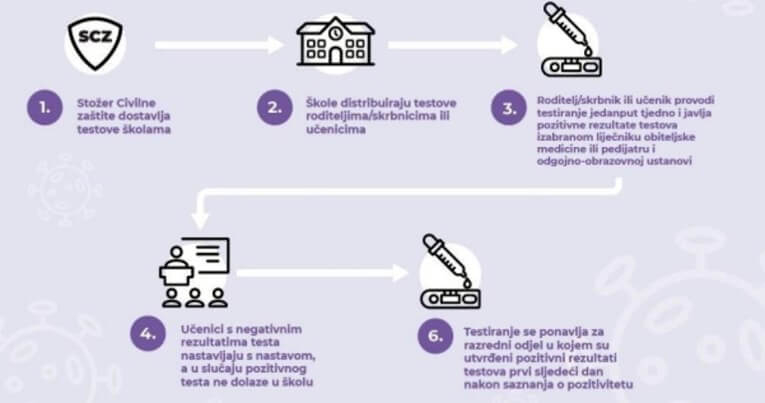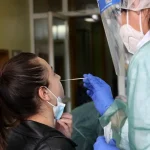How will it look?
Index.hr reports that the procedure should be as follows: The Civil Protection Headquarters will deliver rapid antigen tests to schools. Schools will then distribute the tests to parents or guardians, or students. Testing is conducted once a week by a parent, guardian, or student. If the test result is positive, information about the positive test is reported to the educational institution’s selected family doctor or pediatrician.
All students with a negative result continue to attend classes regularly, and if they test positive, they do not come to school.
Testing is repeated for the entire class in which positive test results are determined the first day after a student receives a positive Covid test.
What did Fuchs say about it today?
Minister of Science and Education Radovan Fuchs commented on student self-testing in an interview with HRT today, confirming that the distribution of tests has begun.
Fuchs called the process of rapid antigen testing “a de facto process of abolishing self-isolation for students so that all those who are not ill are in school.” However, he also said that this was not a step towards mandatory testing or vaccination.
Fuchs said the first part of the tests, about 300,000, went to Dalmatia yesterday.
“At the end of this or the beginning of next week, all schools will have tests available.”
“Of course, we are going to the islands as a priority, as it is a bit more difficult to distribute there, and that’s why we went to the Dalmatian regions first.
The rest, up to a million, arrive maybe today in civil protection warehouses, and the moment these tests are received, they immediately move on to schools. So I think by the end of the week or early next week, all schools will have tests available,” Fuchs said.
“We have said that this student testing is voluntary and that parents will declare in one piece of paper whether or not they will conduct testing of their child,” he said.
What if someone refuses?
“All those who refuse, de facto, nothing will happen to them, nor the children, of course, except that the moment a positive student appears in the class, or possibly someone from that child’s environment becomes ill, that child will have to go into isolation,” Fuchs said.
He also said that these tests are very similar to those that can be bought in pharmacies and that, unlike PCR, it is not inserted deep into the nose with a test cotton swab or stick. Still, a swab is taken from the front of the nasal cavity, and it is a straightforward procedure.
There are no repressive measures.
Fuchs also said that parents who will not test their children and will say that they were negative will not be traced because they do not intend to apply any repressive measures.
“I hope the parents are responsible enough and won’t cheat because this is done so that the education system would virtually abolish self-isolation using a self-testing system,” he said.
“These slogans, shouts and petitions ‘We don’t give our children’ are quite incomprehensible; I don’t understand them, no one touches children. In fact, after these two years of the pandemic, we are doing everything to give children a more normal life and attend school better,” said Fuchs.
“Removing both testing and self-isolation if field data justify it.”
Fuchs also said that if the number of positives dropped significantly, in February, they would switch to the testing variant only in those classes when it is ordered. It would be ordered when a positive case occurs.
“And after that, we would go for the complete abolition of both testing and self-isolation if the data from the field justify it,” Fuchs said. He also said that they did not consider testing children in kindergartens.
For all you need to know about coronavirus specific to Croatia, make sure to bookmark our dedicated section and select your preferred language if it isn’t English.











